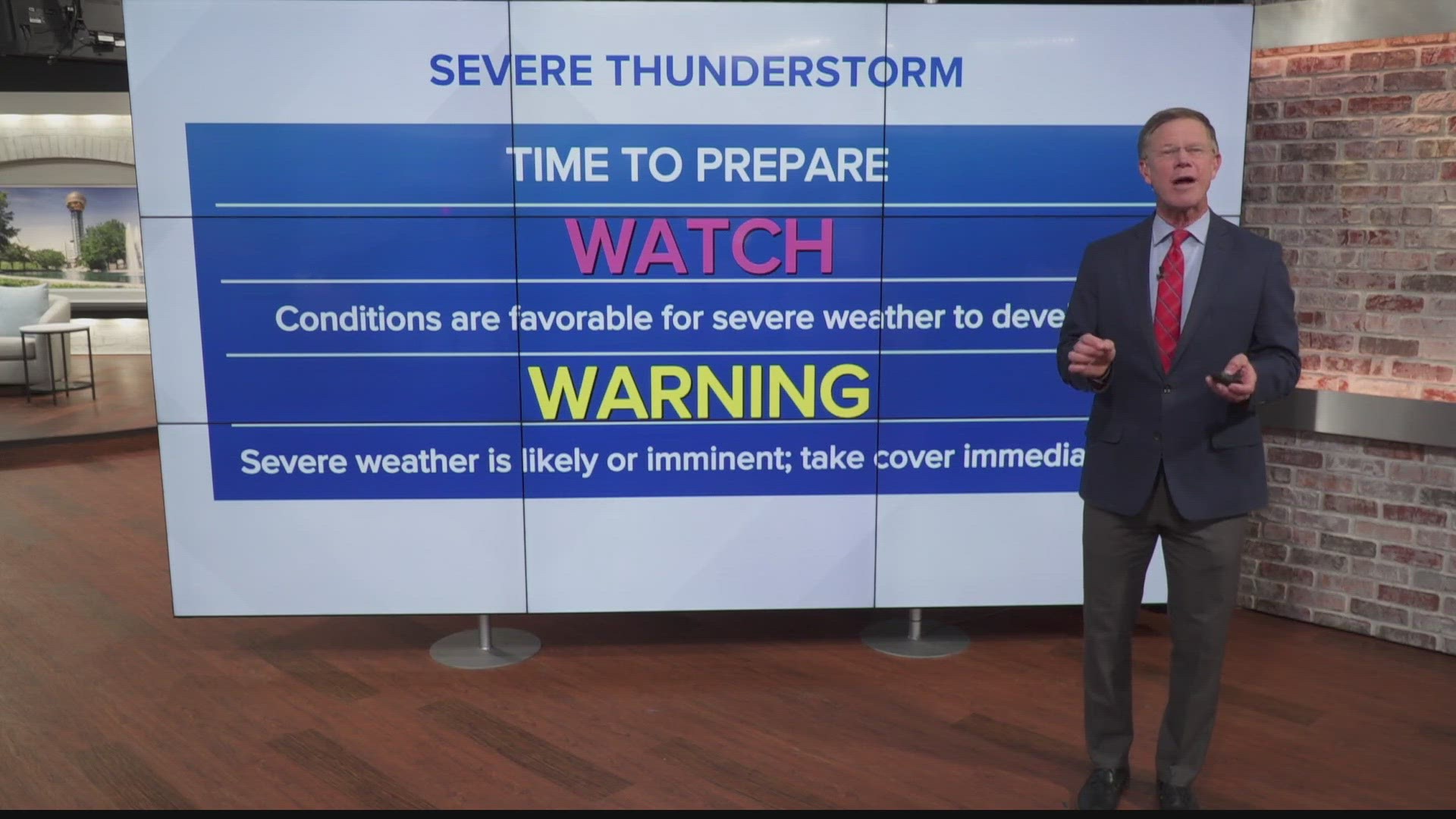KNOXVILLE, Tenn. — When severe weather is in the forecast for East Tennessee, there are a few things you need to know to keep you and your family safe.
First, what makes a thunderstorm "severe?"
A thunderstorm is considered to reach severe limits if it has the ability to produce winds of 58 mph or greater and hail at least 1 inch in diameter. That's the size of a quarter!
Wind that strong can break off large branches, knock over trees and cause structural damage to buildings. Large hail can damage plants, roofs and vehicles.
WATCH VS. WARNING
If a WATCH is in effect for your area, it means that conditions are favorable for the development of severe storms. You should stay alert to changing weather conditions and be prepared to take shelter if needed.
If a WARNING is issued for your area, take action! This means that large hail and/or damaging wind is imminent or occurring near your location. Take shelter in a sturdy building away from doors and windows until the storm passes.
Besides strong wind and large hail, severe storms can also produce frequent lightning and torrential rain.
Tornadoes can strike with little warning, though modern meteorology has made it much easier to spot activity on radar before they make direct landfall.
Much like severe weather warnings/watches, a Tornado WATCH means the conditions are favorable for tornado activity and you should monitor local conditions very closely.
A WARNING means a tornado has been spotted either from the ground or rotation was witnessed on radar, and in that case you need to seek safe shelter and take cover immediately.
So what should you do if severe weather is in the forecast?
KNOW YOUR SAFE PLACE
A basement is the best place to be in severe weather, but not everyone has that option. There are other places to seek shelter and areas to avoid.
First, stay away from rooms with windows. If a strong gust of wind blows through, even without a tornado, it could shatter the glass and send it flying across the room.
Rooms with outside walls also are dangerous. Even without windows, they won’t stand a chance in a tornado.
Don’t even consider an upper-story floor. It will be the next thing to go after the roof.
An interior bathroom, closet, or laundry room are places to consider.
When you reach your safe place, get as low as you can to the ground and cover your head. It’s also a good idea to grab a pillow or something else padded for additional protection from flying glass or objects.
If there’s a tornado watch, it’s a good idea to go through your safe place and make sure it’s ready to access quickly. Remove any unnecessary objects from the room and ensure there’s a clear path inside.
If you live in a mobile home, you should consider going to a safer location -- find a designated shelter or nearby sturdy structure where you can take refuge in.
PREPARE AHEAD
Anticipate and prepare before weather strikes. It's always good to be prepared just in case. Have several ways to receive alerts, such as keeping a weather radio and turning on your phone's emergency alerts.
Have an emergency plan for you and your family ready for the worst-case scenarios -- making sure everyone knows what to do when severe weather strikes, and where to go if they were alone at home or caught on the road.
Be sure to have a good stock of batteries, a few flashlights, and charge your cell phone before the storm arrives. It's also a good idea to have a car charger for your phone as well as a portable weather radio to keep track of severe weather updates in your area if power and cell service were to get clogged or completely go out.
You can stay up to date on the latest forecast and receive alerts by downloading the WBIR App or following the WBIR Weather Team on social media!
Stay alert and be safe!
Follow our weather social media for the latest updates:

